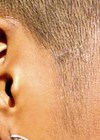Audiology features
EEG as a measure of neuroplasticity in children
Measuring changes in neural activity can teach us a lot about hearing loss and the effect of gained functional hearing. In this article, the authors describe how electroencephalography (EEG) is being used to effectively measure such changes in children with...
What you need to know about recent advances in genetics of hearing loss in the newborn
Identifying the underlying genetic cause of hearing loss in newborns can improve dramatically the early diagnosis and appropriate intervention. Hearing loss is the most common sensory disorder at birth, affecting approximately two out of 1000 newborns [1]. Congenital impaired hearing...
Cochlear implantation in children with congenital single-sided deafness
To date, there has been very limited data supporting the effectiveness of early provision of a cochlear implant to the deaf ear in infants with congenital single-sided deafness. In this article, the authors share their pioneering work with this special...
Paediatric auditory brainstem implant: overview and outcomes
Auditory brainstem implants were first used in adults with NF2. They have more recently become a technology option for children but what is the evidence to support this choice? This article discusses the evidence so far. Auditory brainstem implant is...
Management of single-sided deafness in adults: a bone conduction solution
Single-sided deafness (SSD) presents a limited number of methods for management, and not all of them meet the patient’s expectations. The aim of this article is to set out the available bone-conduction treatment methods for managing single‑sided deafness in adults....
Innovations in remote/teleaudiology patient care
Audiometry remains the gold standard in hearing evaluations. Changes in the delivery of audiometry remain a key challenge in providing a telehealth approach to hearing care. The team at Lyon University Hospital validated an innovative approach to solving this challenge,...
Aided cortical assessment: uses in a paediatric hearing implant centre
When can an aided cortical assessment help decision making in a child’s hearing journey? In this article, the author demonstrates the application using an enlightening case study approach. A device, be it a conventional hearing aid or hearing implant, ideally,...
Vestibular dysfunction after cochlear implantation in children
Whilst vestibular dysfunction is a known outcome of cochlear implant surgery, do we know the risk factors associated with this, particularly in children? In this article a team from University of Tokyo discuss their findings. Cochlear implantation (CI) is an...
Mind the gap – developing a sustainable pipeline for hearing therapeutics
In this article, the authors describe three key challenges faced in developing hearing therapeutics. Collaboration between companies, sectors and disciplines will be key to finding solutions. The unmet need for therapies for hearing loss grows apace, with prevalence rising across...
Microneedles enable inner ear precision medicine
Developing safe, reliable and efficient ways to deliver therapeutics into the cochlea is a key challenge. In this article, the authors share their work to develop microneedles to address this challenge. The era of precision medicine of the inner ear...
Rapid genetic testing to avoid hearing loss in neonates
Thousands of newborn babies could avoid a lifetime of hearing loss thanks to a new rapid genetic test. In this article, we learn how. We have demonstrated for the first time that a rapid genetic test from a cheek swab...
Cell therapies for hearing loss
Cell therapies could offer a way to repair damage to the auditory system and reverse many types of hearing loss. This article looks at the progress being made.
















